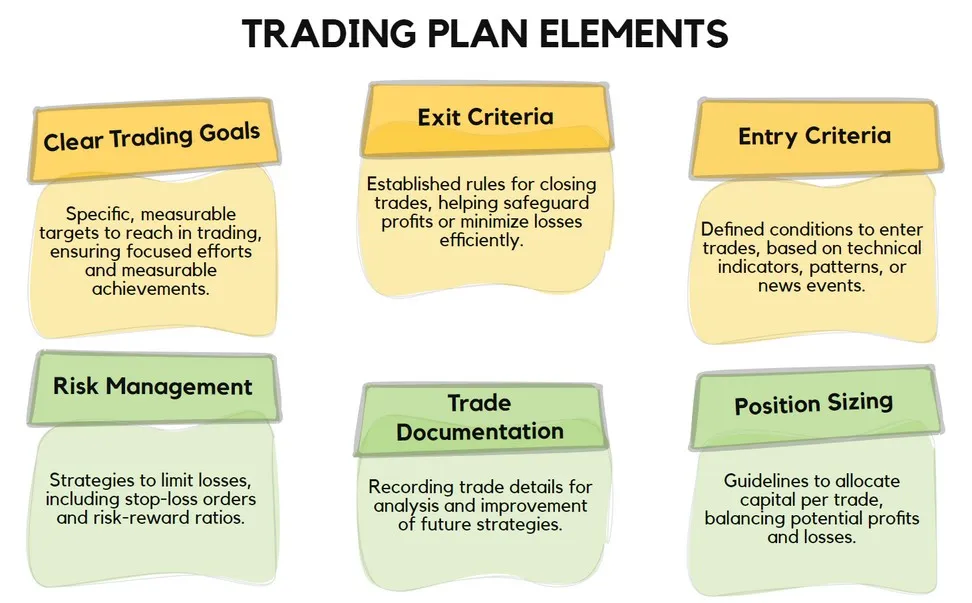To avoid costly forex backtesting mistakes, you’ll need to focus on several key areas.
| Aspect | Details |
|---|---|
| High-Quality Data | Ensure you’re using high-quality data and testing across diverse market conditions. |
| Psychological Factors | Don’t dismiss psychological factors or abandon strategies prematurely. |
| Structured Plan | Develop a structured plan and maintain consistent testing procedures. |
| Transaction Costs | Account for transaction costs and be aware of overfitting your models. |
| Result Interpretation | Interpret results carefully, avoiding overgeneralization across markets. |
Remember, backtesting is just the first step; live trading often presents unexpected challenges. By addressing these common issues, you’ll improve your chances of developing robust, profitable strategies.
Insufficient Data Quality
The foundation of successful forex backtesting depends on the quality of your data. One of the most common trading mistakes is relying on insufficient or poor-quality data, which can lead to inaccurate results which leads to a flawed trading strategy.
To avoid this, ensure your historical data is clean, accurate, and representative of diverse market conditions. There are several providers of FX data:
Tick Data offers historical intraday data for over 2,000 Forex pairs, sourced from more than 95 contributors. This data is characterized by its tick-by-tick bid and ask prices, which allows for precise analysis and trading strategy development. The data is designed to be research-ready, making it suitable for both institutional and individual traders.
TraderMade provides a comprehensive suite of historical Forex data services, including both real-time and historical data accessible via various methods such as RESTful APIs, WebSockets, and FIX protocols. With over 30 years of experience in the Forex industry, TraderMade emphasizes strong customer service alongside its data offerings.
Polygon.io is a financial data platform that provides detailed information on global currencies and cryptocurrencies. The site focuses on delivering real-time and historical data related to the Forex market, including exchange rates, market dynamics, and trends in both traditional currencies and digital assets.
When backtesting your forex strategies, consider the following:
- Data Cleanliness: Verify that your data is free from discrepancies, errors, and outliers.
- Sample Size: Gather a sufficient number of trades to achieve statistical significance and reduce the risk of overfitting.
- Market Phases: Include data from various market cycles to enhance strategy robustness.
- Regular Updates: Maintain current data sources to prevent outdated information from compromising your results.
Neglecting Psychological Factors
While accurate data forms the basis of forex backtesting, it’s not the only factor that can make or break your strategy. One critical element that traders often overlook is the impact of psychological factors on their trading performance.
When backtesting, you may find yourself making rational decisions in a calm, stress-free environment. However, the reality of live trading will be different, with emotions like fear and greed potentially leading to impulsive actions.
Emotional management is critical for making decisions in day trading, and this principle applies equally to forex trading.
To address this issue, simulate emotional states during your backtesting process. Consider the following approaches:
- Introduce time pressure to mimic real-time decision-making
- Incorporate random “noise” events to test your ability to stick to your strategy
- Simulate periods of consecutive losses to gauge your emotional resilience
Lack of Structured Planning
Successful forex backtesting hinges on a well-structured plan, yet many traders overlook this aspect. A lack of structured planning can lead to impulsive decisions, emotional trading, and costly mistakes.
To avoid these issues, you must develop a comprehensive trading plan that outlines specific objectives, entry and exit rules, and risk management strategies.
Price action techniques and candlestick patterns can provide valuable insights for developing robust entry and exit criteria in your trading plan.

Your plan should include:
- Clear trading goals
- Detailed entry and exit criteria
- Risk management parameters
- Position sizing guidelines
- Documentation procedures
By sticking to a structured approach, you’ll maintain consistency and discipline in your trading decisions. Documenting your testing methodologies and results is essential for tracking progress and making necessary adjustments to improve strategy effectiveness.
Regular reviews of your trading plan and results are needed for continuous improvement. These reviews allow you to identify areas for refinement and adapt to changing market conditions.
Additionally, using a systematic approach to backtesting through standardized procedures improves the reliability and reproducibility of your trading strategies.
Ignoring Transaction Costs
Building on the importance of structured planning, another aspect of forex backtesting often overlooked is the impact of transaction costs. Many traders fail to account for these expenses, leading to a dangerous overestimation of their strategy’s profitability.
Studies indicate that neglecting transaction costs can inflate your backtesting results by as much as 50%, painting an unrealistic picture of your trading system’s potential.
When backtesting your forex strategies, factor in the following components of transaction costs:
- Spreads
- Slippage
- Commissions
In the forex market, these costs typically range from 0.5 to 2 pips per transaction. While this may seem negligible at first glance, it can rapidly accumulate, especially for high-frequency trading strategies.
Overfitting and Model Complexity
One of the most common mistakes in forex backtesting is overfitting and excessive model complexity. You’ll find that complex models with numerous parameters often perform exceptionally well on historical data but falter in live trading.

This phenomenon, known as overfitting, occurs when your model becomes too tuned to past events, failing to generalize to new market conditions.
To avoid this, prioritize simplicity in your trading strategies. Focus on logical indicator selection and maintain a balanced model complexity.
Inconsistent Testing Procedures
While simplicity can protect you against overfitting, it’s equally important to maintain consistency in your testing procedures. Inconsistent testing procedures can severely undermine the reliability of your backtesting results, leading to flawed strategy evaluations and potential trading losses.
To avoid this, implement standardized testing protocols that ensure consistent data sets and parameters across all backtests. Incorporating key technical indicators like Moving Averages and RSI can provide insights during the backtesting process, and can increase the robustness of your strategy evaluation.
- Documenting your methodologies is important. This practice allows you to verify the effectiveness of your strategies and make adjustments when necessary.
- Resist the temptation to make arbitrary changes during the testing phase, as this can introduce bias and compromise the objectivity of your results.
- Be vigilant against confirmation, hindsight, and survivorship biases, which can distort your backtesting outcomes.
- Use objective analysis techniques to maintain the integrity of your strategies.
- Use evaluation processes, including regular reviews and feedback loops, to foster informed decision-making and enhance the credibility of your trading strategies.
Premature Strategy Abandonment
Many traders fall victim to “premature strategy abandonment”. This mistake occurs when you discard potentially profitable strategies due to initial poor results, without allowing sufficient time for adaptation and improvement.
You need to understand that trading strategies often require fine-tuning based on ongoing market analysis, rather than being abandoned after a few unsuccessful trades.
Consider the following, which illustrates the potential consequences of premature strategy abandonment:
| Consequence | Impact on Trading |
|---|---|
| Missed Opportunities | Loss of future profits |
| Inconsistent Results | Erratic performance |
| Increased Stress | Emotional decision-making |
| Stunted Growth | Limited skill development |
| Potential Losses | Unrealized long-term gains |
To avoid these, continue with your backtesting and refining your strategies. Markets evolve, and initial results may not accurately reflect long-term potential. Continuous monitoring and making small adjustments can give you valuable insights, helping you identify effective elements to improve over time.
Remember, historical performance doesn’t guarantee future results, but giving up on a strategy prematurely can prevent you from benefiting from eventual market shifts that could favor your approach.
By maintaining patience and diligence, you’ll increase your chances of developing robust, successful trading strategies.
Limited Market Condition Testing
Many forex traders fall into the trap of limited market condition testing during backtesting. This oversight can lead to overfitting and poor performance when strategies are deployed in real trading environments. To avoid this costly blunder, you must include diverse market conditions in your backtesting process.
Successful breakout trading relies on patience and discipline, which should be reflected in your backtesting approach. Incorporating various market conditions helps develop strategies that can withstand different scenarios. Only trading breakouts in a trending environment will show success but you need to test them inside of ranging conditions.
Robust strategy development requires testing across:
- High volatility periods
- Trending markets
- Sideways market conditions
By incorporating these varied states, you’ll ensure your strategy’s adaptability and resilience. Furthermore, your historical data should span multiple economic cycles and significant events, providing a comprehensive view of potential future performance.
Don’t limit yourself to a single currency pair or market. Testing across multiple markets reveals your strategy’s strengths and weaknesses, offering invaluable insights that can improve the strategy.
Remember, market dynamics evolve constantly, requiring regular updates to your backtesting parameters and conditions.
To mitigate the risks of limited market condition testing:
- Expand your data set to include diverse market conditions
- Test across multiple markets and instruments
- Regularly update your backtesting methodology
Misinterpreting Backtesting Results
Even with comprehensive market condition testing, forex traders can still have issues when interpreting backtesting results. Misinterpreting backtesting results can lead to costly errors in strategy development and implementation.
To avoid this, you must approach your data analysis with a critical eye and a nuanced understanding of market dynamics.
Utilizing multiple timeframe analyses can provide a more comprehensive view of market behavior and help validate your backtesting results across different time horizons.
- First, remember that correlation doesn’t imply causation. When examining relationships between strategy parameters and outcomes, don’t assume a causal link without further investigation.
- Resist the temptation to focus solely on short-term performance metrics. A strategy’s true viability often emerges only when evaluated over extended periods.
To accurately assess your strategy’s effectiveness, use multiple statistical measures. Relying on a single metric like profit factor and win percentage can skew your perception of performance and reliability.
Be aware of the potential discrepancies between backtesting results and live trading outcomes. Market conditions are always changing, and past performance doesn’t guarantee future success.
Overgeneralizing Across Markets
A common mistake in forex backtesting is overgeneralizing across markets.
You might develop a strategy that performs exceptionally well on EUR/USD, only to find it fails when applied to GBP/JPY or commodity pairs. This oversight can lead to significant losses and shattered confidence in your trading system.
To avoid this, test your strategies across multiple currency pairs and timeframes. Consider the following comparisons:
| Aspect | Forex | Commodities |
|---|---|---|
| Volatility | Generally lower | Often higher |
| Liquidity | High | Varies widely |
| Trading Hours | 24/5 | Limited sessions |
| Leverage | Often high | Usually lower |
| Regulatory Environment | Varies by country | Stricter oversight |
By recognizing these differences, you’ll understand why a one-size-fits-all approach is always a mistake. Each pair has unique characteristics that influence trading outcomes. For instance, a strategy that depends on high leverage might work in forex but fail in commodities markets with stricter margin requirements.
To mitigate risks associated with overgeneralizing across markets, customize your strategies for specific instruments. This approach allows you to exploit unique opportunities while accounting for each market’s nuances, such as transaction costs and participant behavior.
Remember, thorough testing across diverse market conditions is key to developing robust, adaptable trading systems.
Conclusion
By addressing these issues, you’ll significantly improve your strategy’s robustness and real-world performance. Remember, backtesting isn’t just about historical data; it’s about understanding market dynamics, psychological factors, and risk management. Stay vigilant, continually refine your approach, and don’t let these common issues derail your trading success.
